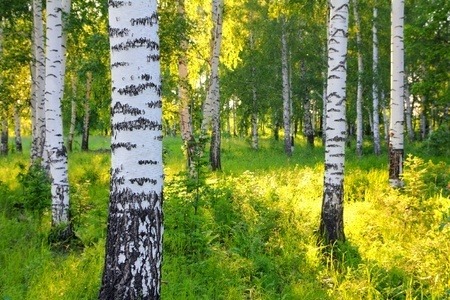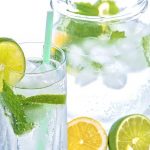
Birch water looks to be an exciting new addition to the raft of beverages that emphasise their natural and health credentials. It is a drink that is harvested from wild birch trees by simply ‘tapping’ the trunks as maple syrup is during spring time but is only possible in a three week window. It follows the intense demand made for coconut water which in 2015 was estimated to be worth £100 million in just the UK alone. Birch water, like coconut water is packed full of electrolytes which helps with hydration but it appears to be rich in some such as the element, manganese. To some, birch water could be regarded as a diet version of coconut water and why is that? Coconut water has a high sugar content and so is full of calories but birch water contains xylitol which is marketed as a zero-calorie sweetener and contains just 5 calories per 100ml which is four times less than coconut water. There is a clear benefit here – there is also a downside because of the low sugar content, but more of that later.
Birch water or sap has been drunk by forest peoples for many centuries in the Nordic and Baltic countries, Russia and the Ukraine, and China (Sendak, 1978). There is evidence from Viking burials that birch sap products have been identified so the tree had important cultural significance at least a thousand years ago. The sap is collected from a variety of birch trees but mainly Betula pendula Roth. and B. pubescens Ehrh. The species, B. pendula is regarded the best species for commercial sap production (Telishevskyi, 1970; Kalinichenko, 1974).
The sap has a very low soluble solids level which is just 1% and this has limited its use as a drink. Most juices have brix levels of at least 6 degrees. That poor brix level is an issue for product developers who want to ferment it for wine or beer (Telishevkyi, 1970; Sendak, 1978). It is however a good base for other beverages including the aforementioned fermented products. Birch sap contains very low levels of glucose, sucrose and malic acid (Beveridge et al., 1978). The sap has very little taste and it is difficult to characterise.
| Nutritional value per 100 g (3.5 oz) | |
|---|---|
| Energy | 4.6 kcal (19 kJ) |
|
Carbohydrates
|
1.1 g
|
| Sugars | 1.1 g |
| Dietary fiber | 0 g |
|
Fat
|
less than 0.1 g
|
| Minerals | |
| Calcium |
(6%)
60 mg |
| Iron |
(1%)
0.1 mg |
| Magnesium |
(3%)
11 mg |
| Manganese |
(52%)
1.1 mg |
| Phosphorus |
(1%)
6.4 mg |
| Potassium |
(3%)
|
Table 1. The nutritional levels in birch sap. Percentage figures in brackets are the recommended daily intake based on USA data.
Like maple syrup, birch sap can be converted to other products even into a syrup (Hornberger, 1887; Kok, 1977; Kok et al., 1978; Ganns et al., 1982) with high concentration. The sap which is predominantly water has an original gravity of 1003°.
Birch sap is available on the market in canned and bottled forms. It is often acidified with citric acid before flash pasteurisation. To improve its use in product development, birch sap has been concentrated using reverse osmosis (Kallio et al., 1987) which is a process which uses membranes to remove water without losing the componentry which makes up the birch water.
Many researchers based at the Finnish Forest Research Institute have examined the optimum time for harvesting birch sap by assessing the acid content over time. Generally, the pH of the sap drops from 7.5 to 5.5 in the spring which is synonymous with an increase in malic acid content from 100 to 600 mg/L which then drops immediately after buds open. There is a small amount of phosphoric acid which is one-tenth that of malic acid. There is also an increase in succinic acid from 10 to 300 mg/L and of citric acid from 5 to 20 mg/L. It is probably the same for all birch trees. The sugar-acid ratio decreases rapidly during the first flow week and remains constant during the main flow period (Kallio and Ahtonen, 1987a). Glucose and fructose have a concentration maximum at the end of April or beginning of May (5-8 g/L). The content of sucrose (0-0.7 g/L) decreases and in most cases disappears by April. There is no diurnal variation. The highest and probably best sap flow is in the 3rd week of April and more than one-third of the total sugar yield can be collected during that period (Kallio and Ahtonen, 1987b).
Birch sap contains some unusual sugars such as betuloside and monotropitoside.
In health terms, herbalists claim that birch sap strengthens the immune system and so enhances resistant to disease. It is also claimed to be a good diuretic and claimed to reduce podagral pains. As with the tincture, birch sap when applied externally promotes wound healing. Herbalists recommend birch sap as a wash to improve skin texture, as well as manage skin issues such as eczema and clear up pimples. It is also used on the scalp to remove dandruff and increase hair growth (Zevin et al., 1997).
One of the historical applications was the production of a Scottish Highland beer made from birch sap and was regarded as a stimulant. Birch beer was already known throughout Canada where the tree grows prolifically. In Scotland, B. alba produced a “rich, sugary, and plentiful spring sap, from which a beer, wine and vinegar could be made. The folk lore was:-
“The Highlanders made incisions in birch trees in spring and collected the juice, which fermented and became a gentle stimulant.”
However, birch sap has generally poor levels of sugar for fermentation and would need to have sugars added to it. There is also a reference to whisky because according to gaelic legend, the word for whisky is “uisge beatha” which is a corruption of the term “uisge beithe” or ‘birch water’ (Hornsey, 2003).
References
Beveridge, T., Bruce, K., and Kok, R. (1978) Carbohydrate and mineral composition of gray birch syrup. J. Inst. Can. Sci. Technol. Aliment. 11 pp. 28
Ganns, R.A., Zasada, J.C., and Phillips, C. 1982. Sap production of paper birch in the Tanana Valley, Alaska. Forestry Chronicle 1 pp. 19.
Hornberger, R. 1887. Beobachtungen uber den Fruhjahrssaft der Birke und der Heinbuche. Forst. Blätter 128 pp. 321.
Hornsey, I.S. (2003) A History of Beer and Brewing. Royal Society of Chemistry. Cambridge. U.K.
Kalinichenko, A.A. (1974) The sap productivity of some species of the birch. Rastit. Rasur. 10 pp. 117
Kallio, H., Karppinen, T. and Holmbom, B. (1985), Concentration of Birch Sap by Reverse Osmosis. J. Food Sci., : pp. 1330–1332. doi: 10.1111/j.1365-2621.1985.tb10470.x
Kallio, H., Ahtonen, S. (1987a) Seasonal variations of the acids in birch sap. Food Chem., 25 (4) pp. 285-292 doi:10.1016/0308-8146(87)90015-X
________________ (1987b) Seasonal variations of the sugars in birch sap. Food Chem., 25 (4) pp. 293-304 doi:10.1016/0308-8146(87)90015-X
Kok, R. (1977) The production of birch syrup. Maple J. Feb: 8.
Kok, R., Norris, E.R., and Beveridge, T. (1978) Production and properties of birch syrup (Betula populifolia). Can. Agr. Eng. 20(l) pp. 5.
Korolyak, I.S. and Tomchuk, R.I. (1973) Birch sap flow in relation to stem diameter, air temperature, date of tapping, and time of day. Lesn. Zh. 16(6) pp. 27.
Orlov, I.I. (1963) Tapping the birch and maple. Sverd., Knign. Izd. 40 pp.
Sendak, P.E. (1978) Birch sap utilization in the Ukraine. J. Forestry (Feb) pp. 120
Telishevskyj, D. (1970) Collection and use of birch sap. Lesn. Khoz. 6: pp. 80.
Tomchuk, R.I., Korolyak, I.S., Fedchuk, N.F., and Kiba, J.G. (1973) The use of birch sap in the food Industry.
Zevin, I.V., Altman, N., Zevin, L.V. (1997) A Russian Herbal: Traditional Remedies for Health and Healing. Healing Arts Press. Rochester, Vermont. USA.


Really nice article. It has always been a product I would like to know more about. Good website as well.